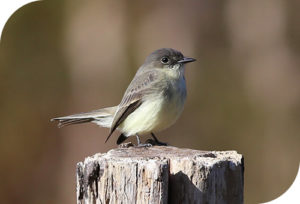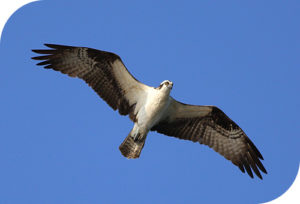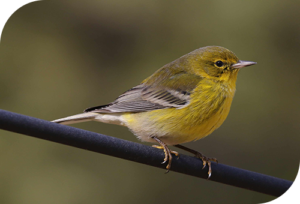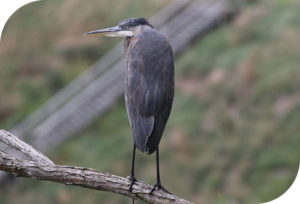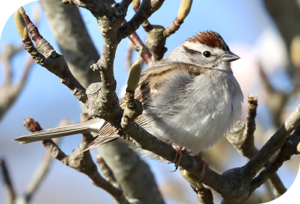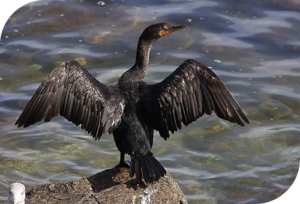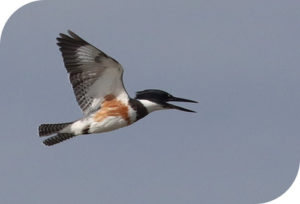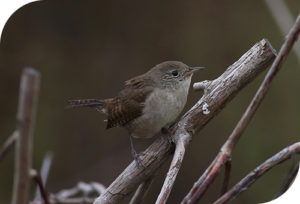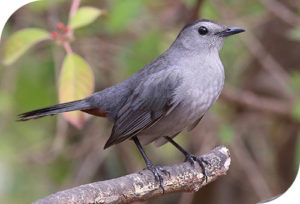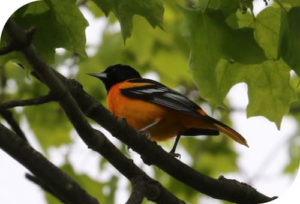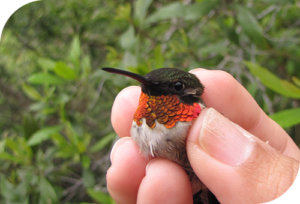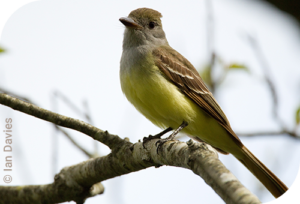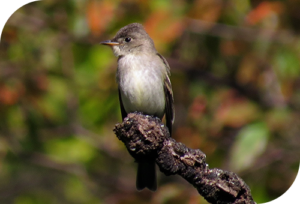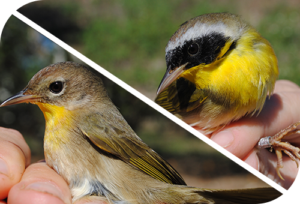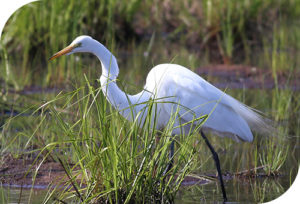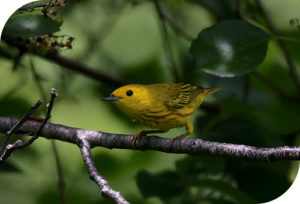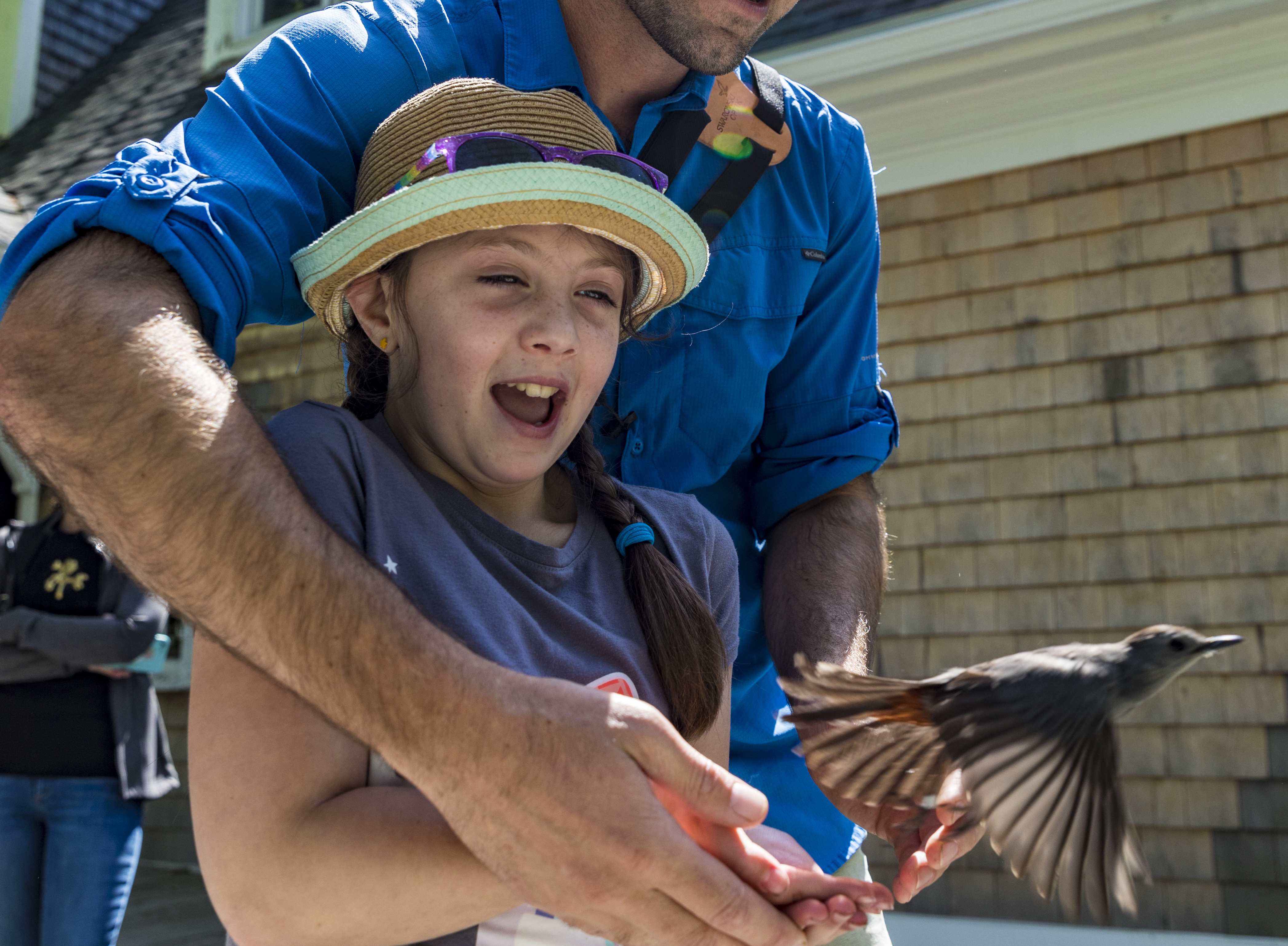In this segment we will highlight migratory species that you may see out your window or flying overhead—every home sits amidst an avian super highway!
Scroll through this page to see weekly migration updates by month and click on the photos to see an eBird map of recent sightings for each species.
Go back to all Backyard Birding
April
Species: Eastern Phoebe
Coming from: southeastern U.S. and eastern Mexico
Habitat: open areas including neighborhoods, often near water
Identification tip: constantly wags tail
Bonus fact: A pair of phoebes often nest under the eaves of the tea house in Manomet’s Garden for Wildlife.
Species: Osprey
Coming from: southeastern U.S. Caribbean, Central and South America
Habitat: most freshwater and saltwater habitats
Identification tip: often soars on crooked wings
Bonus fact: Dr. Alan Poole (read an interview with him here) has banded several Ospreys in coastal New England, including one that was later recorded on the Amazon River in central Brazil.
Species: Pine Warbler
Coming from: southeastern U.S.
Habitat: pines (especially white pine), suet feeders in winter
Identification tip: melodious trilling song
Bonus fact: Pine Warblers have the ability to winter much farther north than most other warblers, partly due to switching over to a seed-based diet.
Species: Great Blue Heron
Coming from: southeastern U.S., Caribbean, Central and South America
Habitat: saltwater and freshwater, nests in small colonies in forested wetlands
Identification tip: on its daily commute flies with steady wingbeats and tucked-in neck
Bonus fact: Young Great Blue Herons feed on Manomet’s shoreline in late summer and early fall, often after dark when only their croaking calls betray their presence
Species: Chipping Sparrow
Coming from: southern U.S.
Habitat: open woods, suburbia
Identification tip: red crown with black eye stripe, clean gray belly
Bonus fact: On April 24, 2019, a migrating flock of 50 Chipping Sparrows descended on Manomet’s Garden for Wildlife, feeding in the lawn for the day. A “wow” moment for many!
Species: Double-crested Cormorant
Coming from: southern U.S.
Habitat: saltwater and freshwater
Identification tip: flies with outstretched neck, stiff wings, showing wedge-shaped tail
Bonus fact: In April, there is a changing of the cormorant guard in New England. The Double-crested Cormorant arrives and the larger Great Cormorant migrates northward to breed.
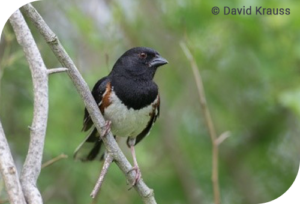
Species: Eastern Towhee
Coming from: southern U.S.
Habitat: woods with dense undergrowth
Identification tip: two distinctive vocalizations, “chewink” and “drink-your-TEAAAA”
Bonus fact: Eastern Towhees are one of the most abundant birds in the pitch pine barrens of southeastern Massachusetts.
Species: Belted Kingfisher
Coming from: southern U.S., Caribbean, Central and South America
Habitat: saltwater and freshwater
Identification tip: long rattling call
Bonus fact: A pair of kingfishers breed in a burrow in Manomet’s bluff each year and often perch on the emergent ocean rocks while fishing.
Species: House Wren
Coming from: southern U.S.
Habitat: shrubby areas including yards
Identification tip: lacks the bold eye stripe of the Carolina Wren
Bonus fact: House Wrens are cavity nesters, and will often use nest boxes. They like to use sticks to make the nest’s foundation.
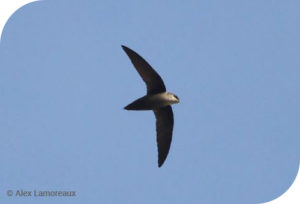
Species: Chimney Swift
Coming from: South America
Habitat: ranges over a variety of habitats
Identification tip: the classic “cigar” with wings, often gives a chattering call
Bonus fact: Despite their superficial resemblance to swallows, swifts are actually most closely related to hummingbirds.


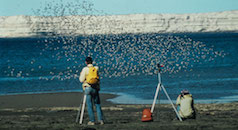
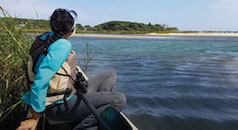
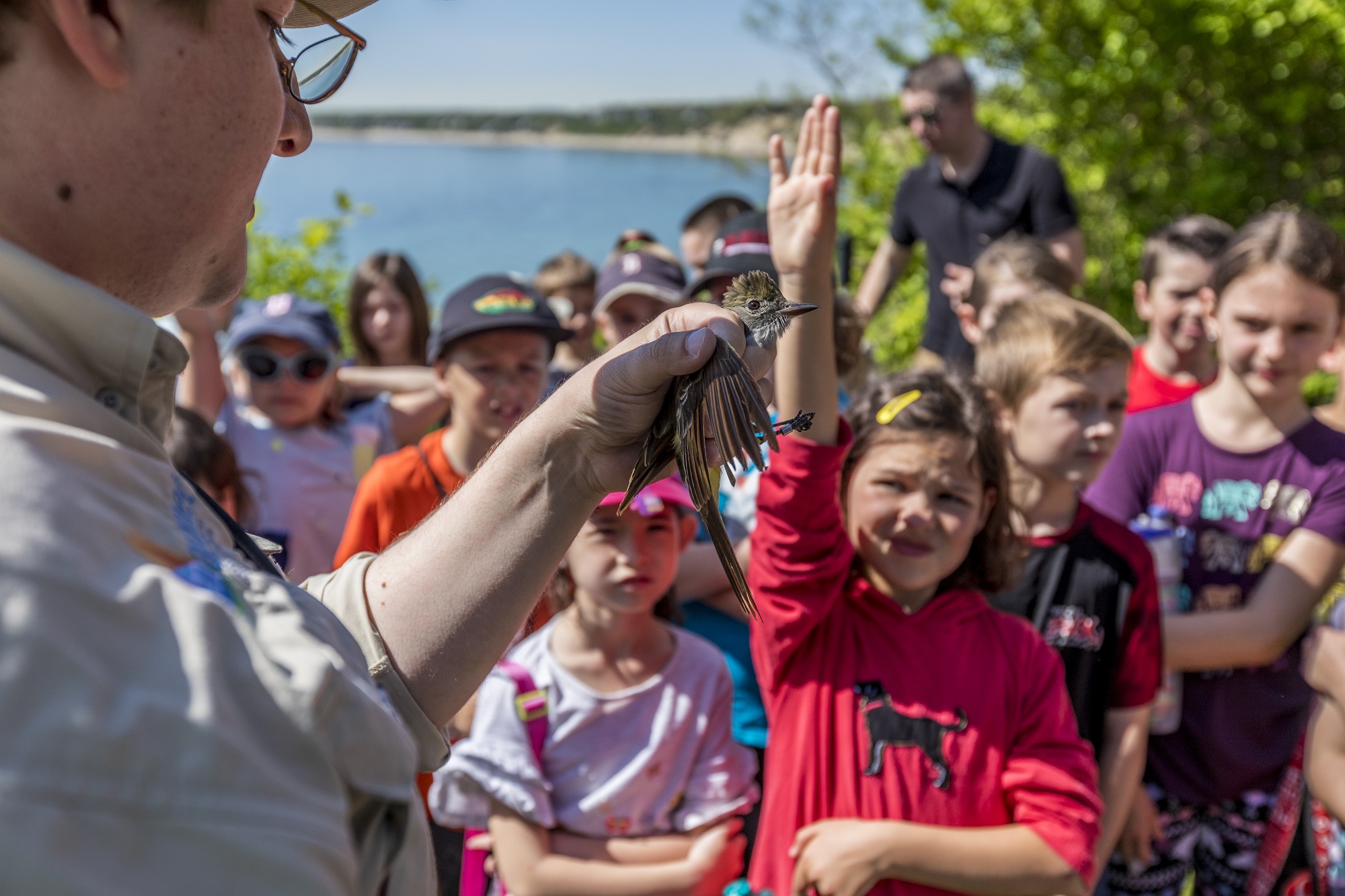
 Back to all
Back to all

